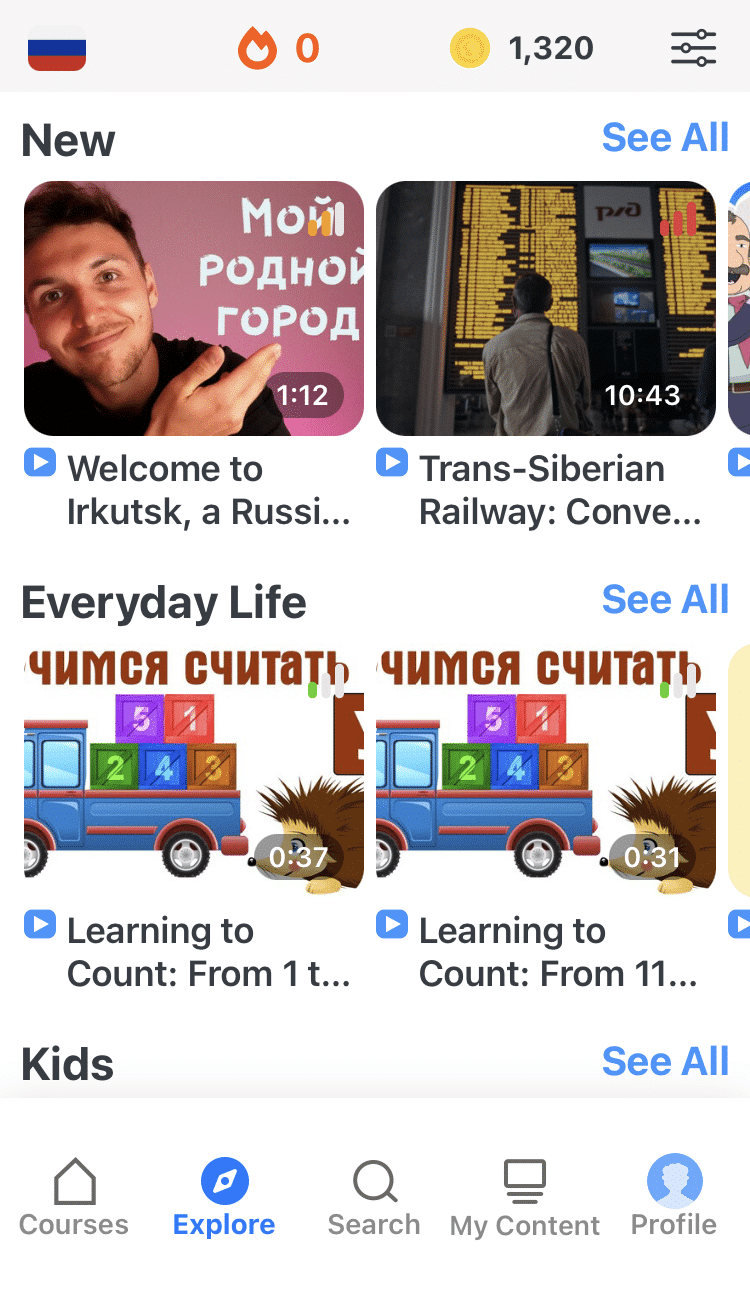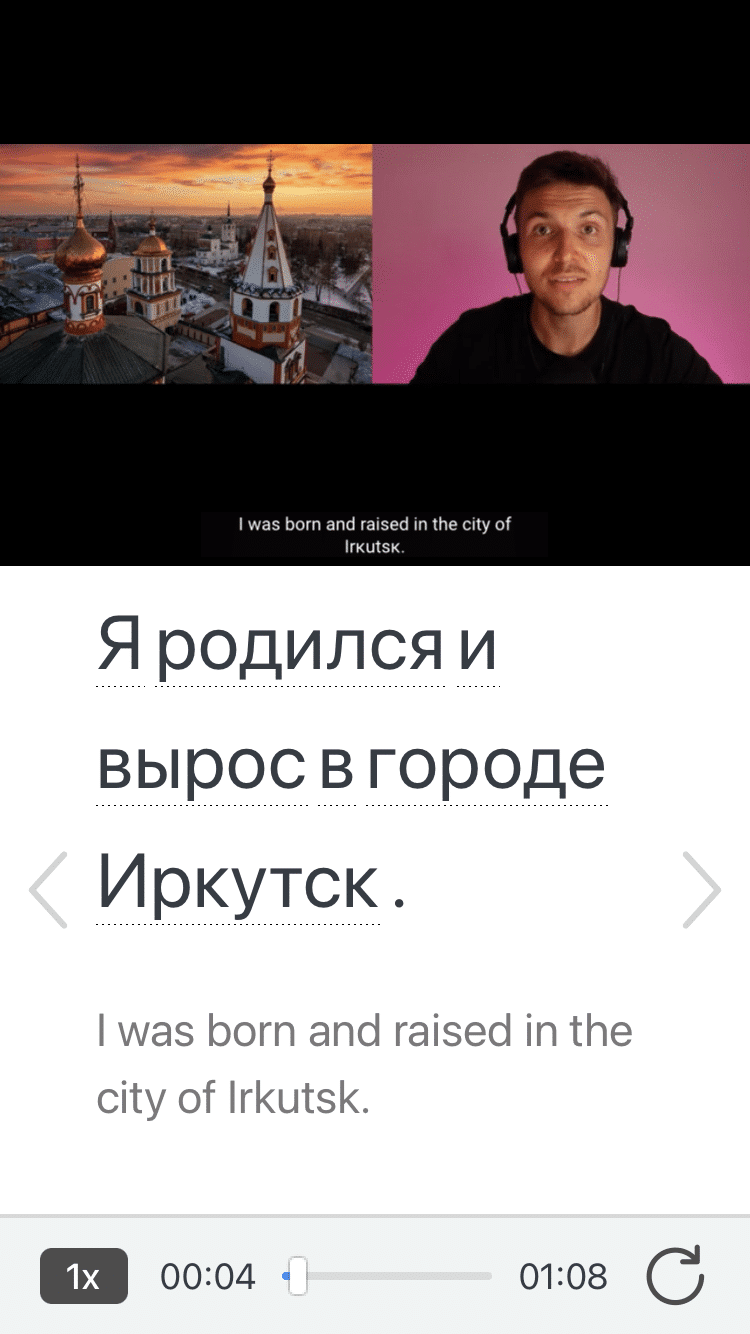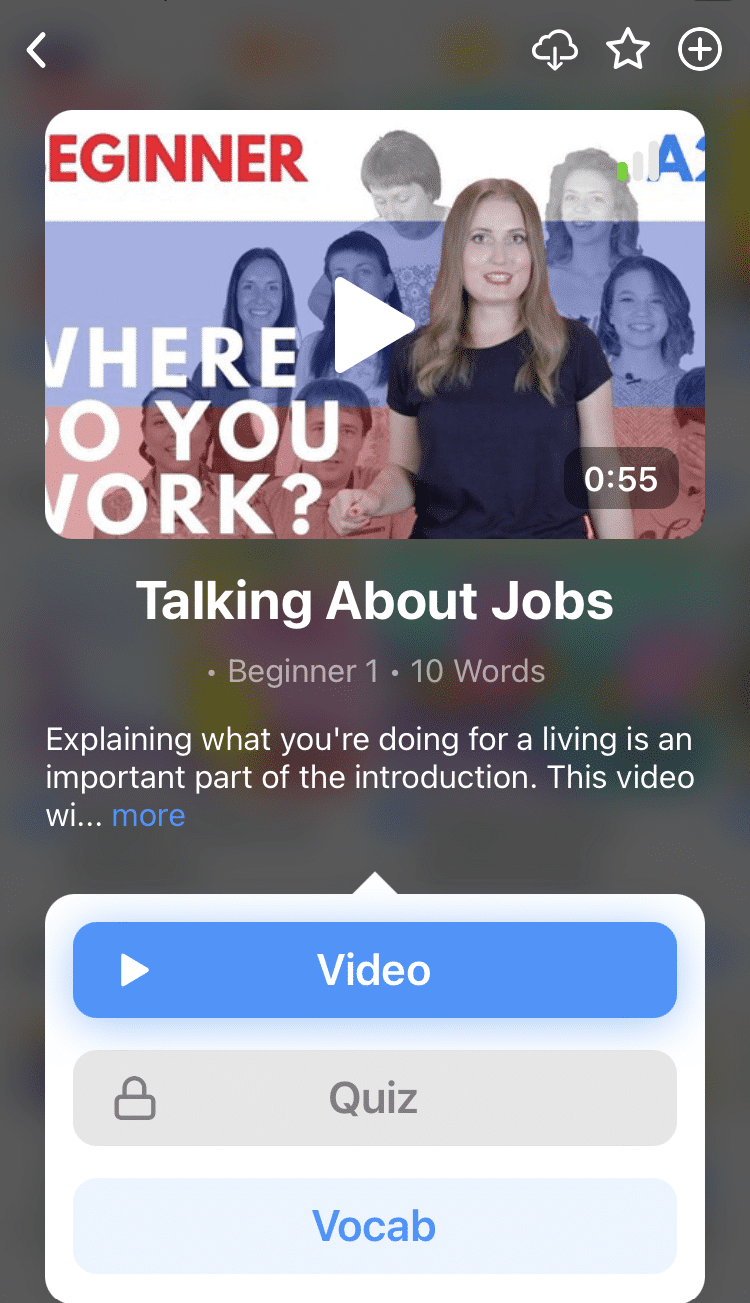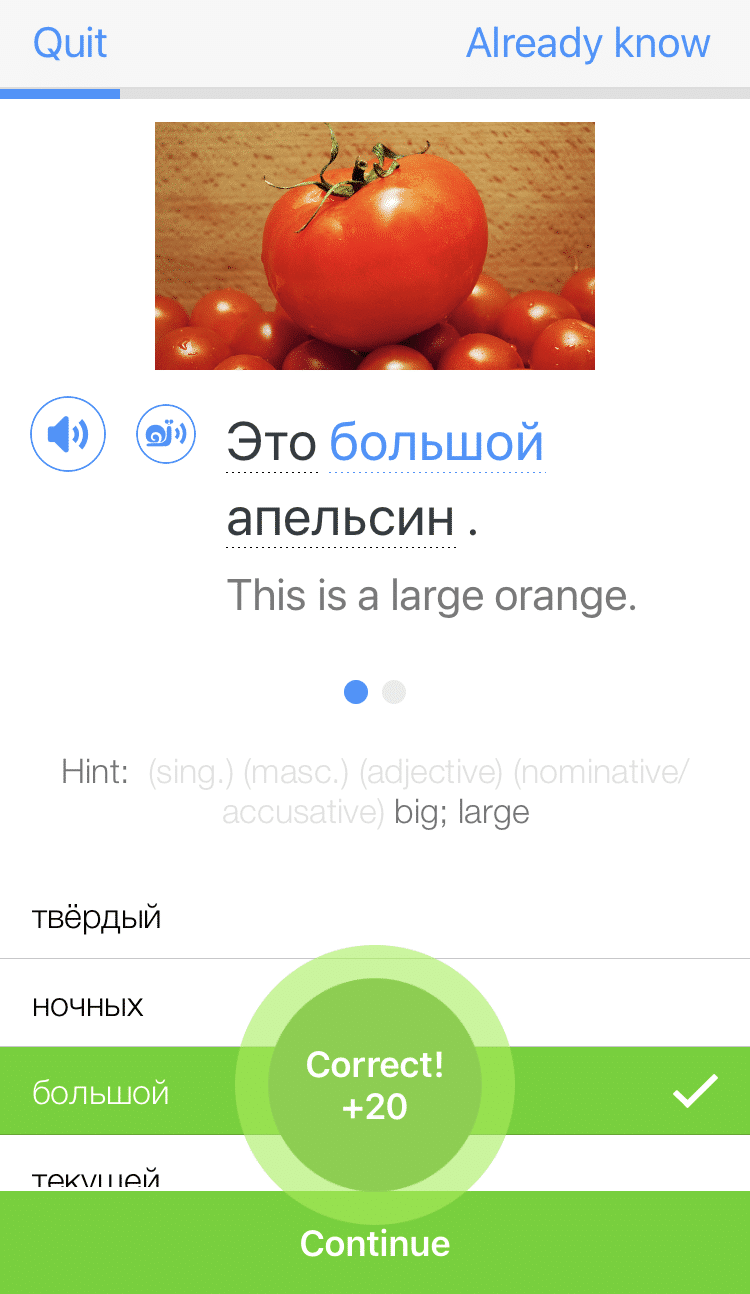
Russian Verbs of Motion: How to Express Direction and Mode of Transportation
Russian verbs of motion indicate movement from one place to another, just like the English “go,” “walk,” “run” and so forth. Unlike their English counterparts, however, Russian motion verbs also account for the direction of movement, method of movement and their grammatical form.
Learn all the Russian verbs of motion and their forms, and master their use to convey where you’re going and how you’re getting there.
Contents
- The 14 Russian Verbs of Motion
- Unidirectional and Multidirectional Verbs
- How to Use Russian Verbs of Motion
- A Closer Look at Russian Verbs of Motion
- Perfective and Imperfective Verbs of Motion
- Prepositions and Russian Verbs of Motion
- Prefixes for Russian Verbs of Motion
- And One More Thing...
Download: This blog post is available as a convenient and portable PDF that you can take anywhere. Click here to get a copy. (Download)
The 14 Russian Verbs of Motion
There are 14 main Russian verbs of motion. Each of these has two forms. We’ll get into more detail about these forms in a moment, but for now all you need to know is:
- The unidirectional form is used for motion that happens only once, movement in one direction or movement that’s happening in the present.
- The multidirectional form is used for recurring or habitual motion, movement in multiple direction and movement in general.
However, there are many situations where both a unidirectional and a multidirectional verb can be used interchangeably.
Later in this post, we’ll get into the details of how to use each type of verb and its forms. But before we get into the nitty gritty of things, it’s a good idea to familiarize yourself with the verbs themselves.
Here’s an overview of all the Russian verbs of motion:
| Unidirectional | Multidirectional | English |
|---|---|---|
| Идти | Ходить | To go by foot |
| Ехать | Ездить | To go by transportation (on wheels)* |
| Бежать | Бегать | To run |
| Брести | Бродить | To stroll |
| Лезть | Лазить | To climb |
| Лететь | Летать | To fly |
| Плыть | Плавать | To swim, to sail |
| Ползти | Ползать | To crawl |
| Гнать | Гонять | To drive, to chase |
| Нести | Носить | To carry by foot/walking |
| Везти | Возить | To carry by transportation |
| Вести | Водить | To lead or take on foot (people, animals or vehicles) |
| Тащить | Таскать | To drag, pull |
Unidirectional and Multidirectional Verbs
Direction is critical when determining which verb form to use. Each Russian verb of motion has a unidirectional and multidirectional form.
Unidirectional Verbs
Unidirectional verbs are used for actions that:
- occur one time
- describe movement in only one direction
- talk about movement happening in the present moment
Here are some examples of unidirectional sentences:
| Russian | English |
|---|---|
| Я иду в университет. | I am going to the university. |
| Мы едем на работу сейчас. | We're going to work now. |
| Дети едут на велосипедах в парк. | The children are going to the park on their bicycles. |
Unidirectional verbs are also used to discuss figurative or idiomatic topics:
| Russian | English |
|---|---|
| Вчера шёл снег. | It snowed yesterday. |
| Фильм идёт. | The film is playing. |
| Этот цвет идёт вам. | That color suits you. |
Since unidirectional verbs may be used to indicate an action happening at the present moment, сейчас (now) is often used to clarify that detail.
Multidirectional Verbs
By contrast, multidirectional verbs describe:
- repeated or habitual actions
- movement in multiple directions
- movement in general (including describing an individual’s ability to move)
Here are some sample sentences that use multidirectional verbs:
| Russian | English |
|---|---|
| Каждый день я хожу в институт. | Every day, I go to the institute. |
| Мы часто ездим за границу. | We often go abroad. |
| Ребёнок ещё не ходит. | The child cannot walk yet. |
Adverbs may be used to showcase frequency or repeated actions with multidirectional verbs, such as:
| Russian | English |
|---|---|
| Иногда | sometimes |
| Всегда | always |
| Часто | often |
| Каждый март | every March |
| Каждую среду | every Wednesday |
| Каждое воскресенье | every Sunday |
How to Use Russian Verbs of Motion
When you’re first starting out, it may be useful to take a formulaic approach to using verbs of motion. That way, you can easily remember and implement the abovementioned rules.
Here’s one basic formula you can use:
- Frequency word/phrase to clarify whether the action is uni- or multi-directional
- Subject + verb
- HA + transport method in prepositional case (if necessary)
- B/HA + destination in accusative case
Many of the sentences presented here use variations of this formula. Here’s an example sentence using the full formula:
Каждый день дети ездят на велосипедах в школу. (Every day the kids ride their bikes to school.)
Let’s break that down:
| Frequency word/phrase to clarify whether the action is uni- or multi-directional | Subject + verb | HA + transport method in prepositional case (if necessary) | B/HA + destination in accusative case |
|---|---|---|---|
| Каждый день | дети ездят | на велосипедах | в школу |
| Every day | the kids ride | their bikes | to school. |
A Closer Look at Russian Verbs of Motion
The 2 Main Russian Verbs of Motion
Here are the main Russian verbs of motion you’ll encounter depending on the method of movement:
| Unidirectional | Multidirectional | English |
|---|---|---|
| Идти | Ходить | To go by foot |
| Ехать | Ездить | To go by transportation (on wheels)* *Note that other means of transportation (via air and sea) use different verbs, as we will show later |
These two verbs are used to express both movement by a mode of transportation and movement toward something.
Expressing mode of transportation
Since ехать and ездить verb forms involve transportation, you should also make it a point to become familiar with different types of transportation and how to express them correctly.
Quite simply, use HA + the type of transport in the prepositional case. For instance:
| Russian | English |
|---|---|
| на машине | by car |
| на метро | by metro |
| на велосипеде | by bicycle |
| на мотоцикле | by motorcycle |
| на лодке | by boat |
| на корабле | by ship |
| на автобусе | by bus |
| на трамвае | by tram |
Expressing movement toward a destination
To show that you’re going to somewhere, you typically use B or HA + the accusative case. For example:
| Russian | English |
|---|---|
| в школу | to school |
| во Францию | to France |
| в театр | to the theatre |
| на Кубу | to Cuba |
| на почту | to the post office |
| на станцию | to the station |
“Going” by Other Methods of Movement
Some verbs of motion in Russian go beyond simple movement and give more information about the mode of transportation. Here are some more specific verbs used to convey motion.
These are listed in unidirectional-multidirectional pairs, in that order:
| English | Russian Verb of Motion | Example Sentence |
|---|---|---|
| To run | Бежать | Я бежал в парке в тот момент. (I ran in the park at that moment.) |
| Бегать | Мы бегали вдоль пляжа, наслаждаясь свежим воздухом. (We were running along the beach, enjoying the fresh air.) | |
| To stroll | Брести | Она брела по улице, наслаждаясь видами города. (She strolled along the street, enjoying the city views.) |
| Бродить | Мы бродили по лесу, находя красивые места для пикника. (We were strolling through the forest, finding beautiful spots for a picnic.) | |
| To climb | Лезть | Кот лез на дерево, чтобы поймать птицу. (The cat climbed the tree to catch the bird.) |
| Лазить | Дети лазили по скалам, исследуя окружающую местность. (The children were climbing on the rocks, exploring the surroundings.) | |
| To fly | Лететь | Самолет летел над океаном, направляясь к своему пункту назначения. (The airplane flew over the ocean, heading toward its destination.) |
| Летать | Птицы летали вокруг пруда, поглощая последние лучи солнца. (The birds were flying around the pond, soaking in the last rays of the sun.) | |
| To swim, to sail | Плыть | Я плыл в бассейне, тренируясь для соревнований. (I swam in the pool, training for the competition.) |
| Плавать | Мы плавали в море, наслаждаясь прохладой воды. (We were swimming in the sea, enjoying the coolness of the water.) | |
| To crawl | Ползти | Ребенок полз вперёд, чтобы дотянуться до игрушки. (The baby crawled forward to reach for the toy.) |
| Ползать | Черепаха ползала по песку, ища укрытие от солнца. (The turtle was crawling on the sand, looking for shelter from the sun.) | |
| To drive, to chase | Гнать | Он гнал машину по шоссе, стремясь добраться до города до заката. (He drove the car along the highway, aiming to reach the city before sunset.) |
| Гонять | Я гонял его по всей площадке, чтобы осалить (I was chasing him all over the ground to tag.) |
Note: Гнать / Гонять isn’t used for “driving a car,” unless it’s implied that the driving is fast or reckless. ( Вести / Водить is used for “driving a vehicle,” as you’ll see below.) Instead, this verb pair means to force someone to move, as in the case of “driving a herd.”
Фермеры гоняли скот на рынок. (The farmers drove the livestock to market.)
However, you can use it as an informal expression for driving fast:
Куда ты так гонишь? (Where are you driving so fast?)
“Carrying,” “Leading” and “Taking’” Russian Verbs of Motion
There are four verbs of motion pairs that fall into the “carrying” category. The carrying verb pairs are sometimes difficult for learners to get their heads around, because the idea is that an object or a person is being moved.
Each of these pairs is described in more detail below:
| English | Russian Verb of Motion | Example Sentence |
|---|---|---|
| To carry by foot/walking | Нести | Она несла корзину с фруктами на рынок. (She carried a basket of fruits to the market.) |
| Носить | Они носили вёдра с водой из реки в посёлок. (They carried buckets of water from the river to the village.) | |
| To carry by transportation | Везти | Он везёт груз на грузовике. (He carries cargo on a truck.) |
| Возить | Они возили товары по всему городу для доставки. (They carried goods around the city for delivery.) | |
| To lead or take on foot (people, animals or vehicles) | Вести | Они вели группу туристов через лес и обратно к лагерю. (They led a group of tourists through the forest and back to the camp.) |
| Водить | Пастух водит стадо овец на пастбище. (The shepherd leads the flock of sheep to the pasture.) | |
| To drag, pull | Тащить | Он тащил тяжёлую коробку по полу. (He dragged a heavy box across the floor.) |
| Таскать | Я таскал эти сумки целый день. (I've been dragging these bags around all day long). |
Perfective and Imperfective Verbs of Motion
Russian verbs are either perfective or imperfective, and verbs of motion are no exception.
But as you may have noticed, directionality takes on some of the meaning usually defined by perfectiveness. Up until now, we’ve only been dealing with the imperfective verbs. Perfective unidirectional verbs are generally used to describe the beginning of movement, whilst perfective multidirectional verbs usually refer to movement that was or will be happening for some time, often to underline the limits of that amount of time.
Perfective Verbs
Perfective verbs of motion are used to:
- mark the start of an action
- show a change of action in progress or with the future perfective of another verb.
For instance:
| Russian | English |
|---|---|
| Она пошла в магазин купить новое платье. | She has gone to the store to buy a new dress. |
| На прошлой неделе он поехал в Японию. | Last week he went to Japan. |
| Мы гуляли по городу, но побежали, потому что опаздывали на урок. | We were walking around town, but began jogging because we were late for class. |
| Я пойду пообедаю. | I’ll go have some lunch. |
An important thing to remember regarding verbs of motion and aspect is that both unidirectional and multidirectional verbs have a perfective aspect.
For example:
- лететь (imperfective) and полететь (perfective) are unidirectional (a.k.a. concrete)
- летать (imperfective) and полетать (perfective) are multidirectional (a.k.a. abstract)
Further, perfective verbs have only two tenses: past and future.
Imperfective Verbs
The imperfective aspect is used to showcase actions that are:
- ongoing
- repeatable
- incomplete
- indicative of a length of time
For example:
| Russian | English |
|---|---|
| Каждый день я хожу в спортзал. | Every day I go to the gym. |
| Я иду домой. | I am going home. |
| Мы плавали в океане весь день. | We swam in the ocean all day. |
Note that both unidirectional and multidirectional verbs utilize the imperfective aspect.
Prepositions and Russian Verbs of Motion
The method of movement will determine both which verb you use and which preposition accompanies it.
Here are the most common prepositions that accompany Russian verbs of motion:
| Russian | English |
|---|---|
| К | to, toward |
| В | into, in, to |
| На | onto, on, to |
| Из | from, out of |
| От | from, away from |
| По | along, on, through |
| За | behind, after, for |
| Перед | in front of, before |
| Под | under, below, to |
| С | with, from |
| Вокруг | around |
| Внутри | inside, within |
| Сквозь | through |
| Между | between |
| Напротив | opposite (as in "across the road from") |
| Около | near |
Note that the preposition “У” is not used with verbs of movement. It’s about the present location (“I’m near X”). The only way to indicate movement using this preposition is not through a verb, but through a past or future tense (“I will be near X,” “I was near X”). In other words, it’s a hint at movement.
Take these sentences, for example:
Я буду у твоего офиса через час. (I will be near your office in an hour.)
Они были у памятника, когда они мне позвонили. (They were near the monument when they called me.)
Prefixes for Russian Verbs of Motion
As with other Russian verbs, verbs of motion use prefixes to add meaning and context to them.
Some of the most common prefixes used with Russian verbs of motion include:
| Russian Prefixes Used with Verbs of Motion | English Translation | Examples |
|---|---|---|
| По- | A perfective verb marker | Поехать в город (To drive to the city) |
| Вы- | Out, forth | Выбежать из дома (To run out of the house) |
| В- | Into | Влететь в океан (To fly into the ocean) |
| При- | Toward, to | Приплыть к пирсу (To sail toward the pier) |
| У- | Away, off | Убежать от опасности (To run away from danger) |
| От- | Away from | Отходить от стола (To step away from the table) |
| Под- | Under, beneath | Подплыть под мост (To swim under the bridge) |
| За- | Behind, after | Зайти за дом (Walk behind the house) |
| Пере- | Across, over | Пересечь реку (To cross over the river) |
| На- | Into, onto | Наехать на препятствие (To drive onto an obstacle) |
Think you’ve got the hang of Russian verbs of motion? If so, check your skills using this online proficiency test. There are many resources that can help you with that, but we recommend this handbook from Yale that focuses specifically on this tricky subject.
With these verbs of motion in your Russian vocabulary, your language skills can keep on moving forward!
Download: This blog post is available as a convenient and portable PDF that you can take anywhere. Click here to get a copy. (Download)
If you love learning Russian and want to immerse yourself with authentic materials from Russia, then I should also tell you more about FluentU.
FluentU naturally and gradually eases you into learning the Russian language and culture. You'll learn real Russian as it's spoken by real Russian people!
FluentU has a very broad range of contemporary videos. Just a quick look will give you an idea of the variety of Russian-language content available on FluentU:
FluentU makes these native Russian videos approachable through interactive transcripts. Tap on any word to look it up instantly.
Access a complete interactive transcript of every video under the Dialogue tab. Easily review words and phrases with audio under Vocab.
All definitions have multiple examples, and they're written for Russian learners like you. Tap to add words you'd like to review to a vocab list.
And FluentU has a learn mode which turns every video into a language learning lesson. You can always swipe left or right to see more examples.
The best part? FluentU keeps track of your vocabulary, and gives you extra practice with difficult words. It'll even remind you when it’s time to review what you’ve learned. You'll have a 100% personalized experience.
Start using the FluentU website on your computer or tablet or, better yet, download the FluentU app from the iTunes or Google Play store. Click here to take advantage of our current sale! (Expires at the end of this month.)
And One More Thing...






